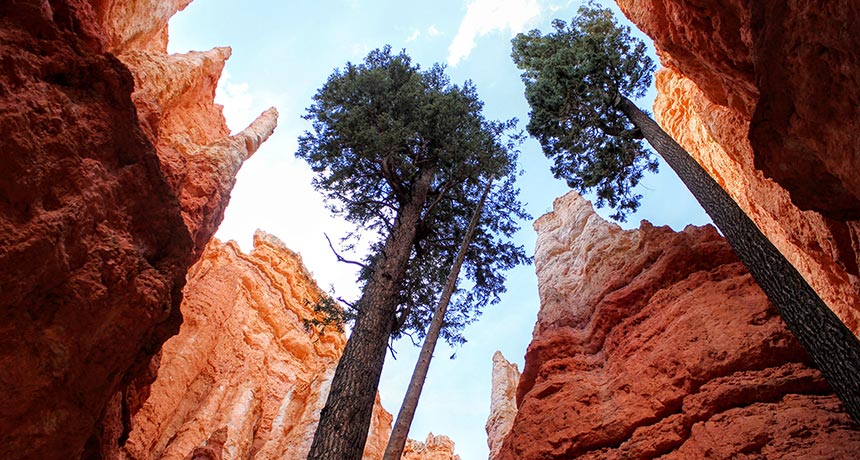Conifer ancestors had a double dose of DNA

Ancestors of Douglas firs (Pseudotsuga menziesii), such as this one growing in Bryce Canyon National Park, and other conifers underwent genome duplication — adding extra copies of genetic material — around the time of the Permian-Triassic extinction.
Zheng Li







